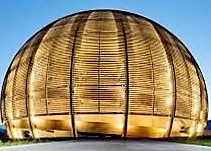Speaker
Description
Among the nucleosynthesis mechanism involving the heavy nuclei, the so-called slow (s-)process is one of the better known. Being responsible of about half of the element heavier than iron, many models were built in order to describe the process and the final element abundances.
The s-process take place in the inner layers of AGB stars, where the heavy elements are produced during interpulses periods (when the $^{13}$C($\alpha$,n)$^{16}$O generates the neutrons necessary for the process) as well as during thermal pulses (when the $^{22}$Ne($\alpha$,n)$^{25}$Mg is activated) through a succession of neutron captures and beta decays. The accurate knowledge of the neutron capture cross sections for all the elements involved in the process plays a key role, and in particular those with a neutron magic number. Therefore in last decades great efforts have been undertaken in order to improve the accuracy of these data.
At the n_TOF facility at CERN a recent experiment to measure the $^{140}$Ce neutron capture cross section has been performed, motivated by a large discrepancy between the models predictions and the astronomical observation for the cerium abundance[1]. This measurement was characterized by an unprecedented combination of the high energy resolution of the n_TOF neutron beam and a highly enriched $^{140}$Ce sample. The experimental apparatus was based on four gamma detectors based on C$_6$D$_6$ liquid scintillators, which are characterized by a very low neutron sensitivity.
In total, 81 resonances were measured and fitted. For each, the capture and neutron widths were determined, highlighting the large discrepancies respect to the major nuclear libraries. These new data allowed to calculate the $^{140}$Ce(n,$\gamma$) MACS with an uncertainty lower than 5%, significantly improving the experimental data available for the libraries update. The measurement results and their implications on the Ce abundances predicted by the stellar models will be presented.
[1] O. Straniero, S. Cristallo, L. Piersanti, Heavy elements in globular clusters: the role of asymptotic giant branch stars, ApJ 785 (2014) 77.
